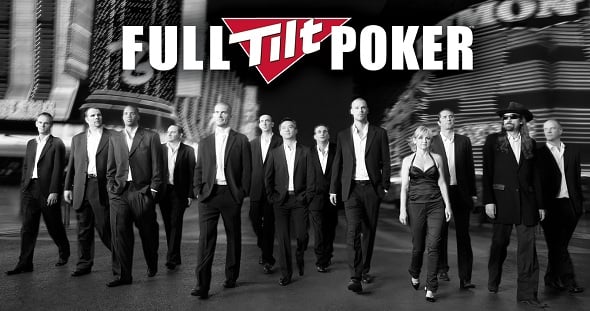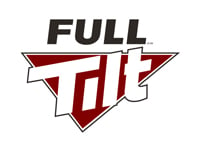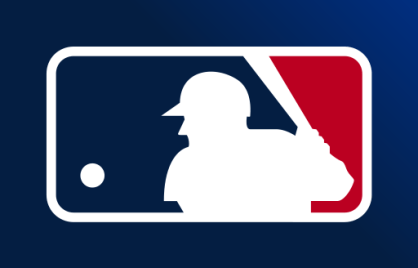What Ever Happened To Full Tilt Poker?

Full Tilt Poker used to be one of the biggest and most popular destinations during the early days of online poker, and while it had to compete with the likes of PokerStars and Party Poker, Full Tilt managed to hold its own over the years for many reasons.
The first and the most obvious one was their roster of high-profile players.
With the likes of Phil Ivey, Chris “Jesus” Ferguson, Howard “The Professor” Lederer, and Tom “durrrr” Dwan wearing their colors, Full Tilt quickly became the number one destination for poker fans.
Secondly, their software was unique and quite modern for the early to mid-2000s. Featuring a cartoonish design and funny avatars but still offering a very player-friendly and easy-to-use interface, it was well ahead of its time.
So, what happened to Full Tilt Poker?
If you try to look up the room today, you might get excited initially as the website still exists.
However, that excitement will be short-lived as you’ll quickly realize it’s just a skin of PokerStars that kept some of the original design, but not much else.
If you’ve been wondering what happened to FTP, this is the full story, from the glorious beginning to the bitter end.
Full Tilt Poker Takes The Poker World By Storm
The poker boom started during the early 2000s, before things really took off in 2003 after the legendary WSOP Main Event win by Chris Moneymaker.
The writing was on the wall, and those in the know saw a huge business potential in the game.
Chris Ferguson, already an established and accomplished player at the time, was among those who saw the opening and decided to take his chances. He paired up with Ray Bitar, and together they launched Full Tilt Poker in July of 2004.
They wasted no time bringing big names onboard.
The likes of Howard Lederer, Phil Ivey, John Juanda, Erick Lindgren, and Jennifer Harman joined Full Tilt Poker, and the room devised a very clever strategy to attract new players.
Under the slogan “play with the pros” FTP appealed to the masses of poker fans who rushed to the site for their chance to sit across from one of their favorite players.
The room received plenty of additional marketing thanks to High Stakes Poker’s sponsorship, easily the most popular poker show ever filmed.
On top of all this, many fans of the game would log in to Full Tilt just to observe some high stakes cash game action.
The site became the go-to place for everyone seeking to play online nosebleeds, with $300/$600+ games running regularly.
By the end of 2005, Full Tilt Poker had taken over the online poker scene, leaving Party Poker and PokerStars, their two biggest competitors at the time, far behind.
Full Tilt was the synonym for online poker during those early years.
FTP Rolls The Dice As The UIGEA Is Passed
By this point in time, there is hardly anyone in the poker world, especially if they happen to be from the U.S., who doesn’t know about the infamous Unlawful Internet Gambling Enforcement Act of 2006.
The Act was targeted at financial institutions in the States, expressly forbidding them to process any transactions directed towards online gambling sites.
This was a big hit for online poker.
Prior to 2006, players from the U.S. made up a large percentage of the overall player pool.
However, the UIGEA was directed at financial institutions and not gambling and poker operators themselves, so there was some grey area.
Party Poker decided that it was too much of a risk to continue operating in the States, but PokerStars and Full Tilt saw another opportunity here.
The people behind Full Tilt Poker decided to roll the dice and continue business as usual. Some years later, this would prove to be a big mistake.
Once the initial dust had settled, it seemed things were back to normal.
With one competitor less to worry about, Full Tilt made the brand even stronger and it seemed like their decision to ignore the UIGEA was spot on.
This was just an illusion, though.
Things were happening behind the scenes that the general public and even some of those inside the company weren’t aware of.
The pin was about the drop, and when it finally did, FTP received a huge blow that it would never recover from.
The U.S. Department Of Justice Takes On Online Poker
April 15, 2011, is a date that almost every poker player who’s been around for a while is well familiar with.
It became known as Black Friday as it was easily the hardest and ugliest day in the relatively short history of online poker.
Players who logged on that day were faced with this shocking message:

On that day, the U.S. Department of Justice (DoJ) made it very clear that pretending the UIGEA didn’t exist wasn’t the best move.
They spent several years building the case and collecting the evidence, but they went hard when they were ready to go.
In a single day, they took down websites of three major poker operators in the U.S. Apart from FTP, PokerStars and Absolute Poker’s domains were also seized.
The shock that players experienced on that day when they tried to log in to their Full Tilt accounts can hardly be put into words.
Many people had substantial amounts of cash stuck on the site, and no one saw the DoJ coming.
False Promises And The Fall Of Full Tilt Poker
Initially, Full Tilt Poker issued several reassuring statements that players had nothing to worry about as their money was safe.
With the promise of paying U.S. players in full, the room was allowed to continue operating in the rest of the world for a short while.
However, after a few weeks, it became clear that something wasn’t right. The DoJ shut down FTP once again, and underlying problems started to surface.
It would turn out that the promises about funds being safe were completely false.
The room didn’t have all the players’ money readily available, and the DoJ launched a full-scale investigation into the matter.
Soon after, the claims of the “Ponzi scheme” operation came about.
Full Tilt Poker has been experiencing problems processing payments for years.
Some payment processors that dealt with U.S. deposits weren’t sending them money, but the room continued to add it to the players’ balances just the same, while actual transactions were stuck in limbo.
While the room was operational, they could handle the backlog, although players were complaining about delayed withdrawals long before Black Friday.
But, once they were forced to shut down the operation and money from new players stopped coming in, it was the end.
There simply wasn’t enough money in FTP’s accounts to cover everyone’s balances.
Players were furious and felt betrayed, but there wasn’t much anyone could do at that point. It was hopeless situation.
Who Was To Blame For Full Tilt Poker’s Fall?
Once the FTP scandal came to light, both the authorities and players started to ask questions.
Whose fault was it? How did such a big room with such a great market position end up where it was?
All eyes were directed at the main honchos: Ray Bitar, Howard Lederer, and Chris Ferguson.
At the very least, they had to know about these issues, and they had the responsibility to act before it was too late.
But, the poker community was hit with deafening silence for the most part – they never got the answers they were hoping for.
By that time, Ferguson (below) was no longer as involved with the company management.

Lederer did a few interviews, but his response to most questions was, “I don’t know.” Bitar stayed away from the public eye.
During the investigation, it was revealed that the management of FTP further deepened the crisis by issuing big loans to some of their big-name players.
In the end, the blame for the FTP fiasco falls to those in charge at the time.
For that reason, they were ostracized by the poker community and had to pay hefty fines.
But, the whole story of what was actually happening behind the closed doors in those last years and months of Full Tilt Poker was never told in full.
One must wonder what would have happened if Black Friday had never occurred.
Perhaps the story of Full Tilt Poker would be much different. Maybe they’d have found a way to get the funds, and we’d have been none would be the wiser.
PokerStars Buys Full Tilt And Restores Player Funds
The uncertainty surrounding FTP was concerning.
It soon became clear that the company couldn’t pay players back, so they had to find someone willing to take over and rectify the situation.
With the brand tarnished and the player trust severely shaken, this was not an easy feat.
In July 2012, former FTP players could finally see the light at the end of the tunnel after long and painful months of waiting.
PokerStars agreed to purchase the fallen star and reimburse all players’ balances: those from the U.S. and the rest of the world alike.
Shortly after, the ROW players could log back in to their old FTP accounts and access their funds.
Money was available for withdrawal, and players could also opt to transfer it to their PokerStars account through a rather simple process.
However, U.S. players weren’t so lucky.
Although the repayment money was secured, there was a long process ahead. It wasn’t before 2014 that first installments started to come in for those who went through necessary steps to claim what was owed to them.
It took several years for this process to complete.
With financial issues out of the way, the question became: what would happen with Full Tilt Poker?
For a little while, the room was up and running again, and with PokerStars now backing the brand, some players believed the room would bounce back and reclaim its position.
FTP Discontinued: The End Of An Era
It seems that PokerStars entertained the idea of keeping Full Tilt Poker alive but eventually decided not to go through with it.
While the brand certainly had some value, everything that happened over the years made it very difficult to rebuild the trust.
Plus, with PokerStars being the biggest brand worldwide now that FTP was out the picture, there wasn’t much incentive to spend resources on what used to be its competing brand.
PokerStars created a huge amount of goodwill with the player base by purchasing FTP and reimbursing players in full.
They came through like a knight in shining armor, making sure everyone got every single cent of their money back.
From a marketing perspective it was a great move, even if a costly one.
PokerStars demonstrated their care for the community, regardless of what their business motivation might have been. They came through on their promise with no excuses.
But Full Tilt Poker had to go.
Once repayments were done, PokerStars decided it was time to send the legendary room to the sidelines.
They kept the domain and the software, as this was a part of the purchase, but FTP stopped existing as a standalone entity.
Instead, it is now just a skin of PokerStars with a slightly different design.
If you download Full Tilt Poker today, you’ll find that it features exactly the same games and players as the original PokerStars client.
The Final Goodbye To Full Tilt Poker

Those involved with online poker during the early 2000s will always remember Full Tilt Poker with a bit of nostalgia.
It was the place where some of the most epic high stakes battles took place and where many up-and-coming players made a name for themselves.
On the other hand, heaps of freerolls and small-stakes games and tournaments made it possible for everyone to experience the game and build their bankrolls from scratch.
Had chips fallen differently, there is no telling what would’ve become of Full Tilt Poker.
Perhaps it would be the strongest brand today. Perhaps it would run its course and shut down, like so many other rooms over the years.
In the end, the story of Full Tilt Poker wasn’t a glorious one, but the room certainly had its moments.
It’s a shame that PokerStars decided to put it away for good, but maybe it was for the best.
For more articles in this series, check out:


